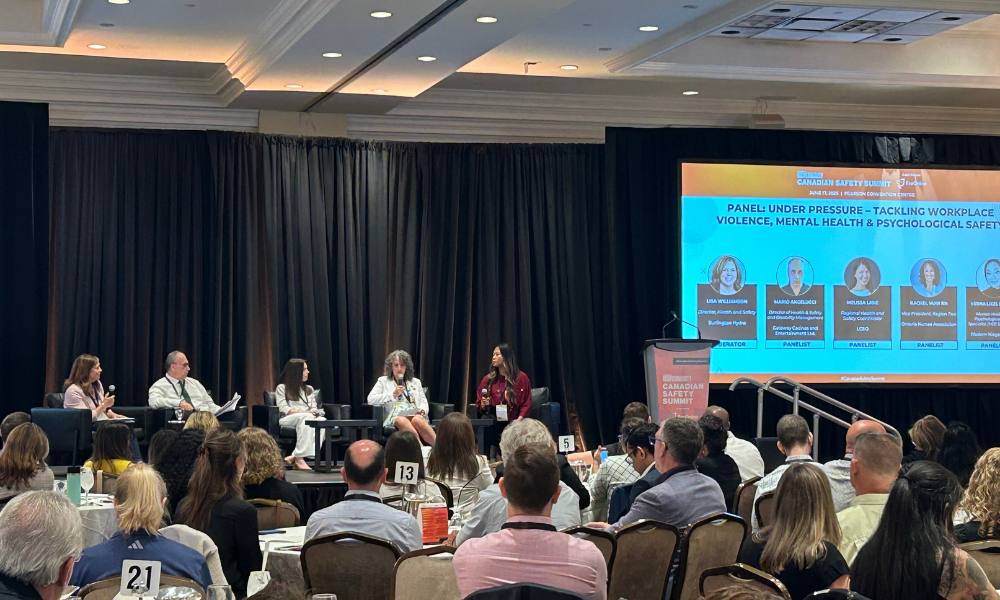Rising benefits costs, accommodation issues are testing employers

The pandemic has upended many aspects of the modern workplace and there is evidence the disease will have long-lasting outcomes for many.
People suffering from long COVID are not just having a hard time with their health – they’re in bad shape in employment and life overall, finds a new study.
“We found that people with higher levels of stigma had more symptoms, lower function, reduced quality of life, and a greater chance of unemployment due to disability,” says Ron Damant, professor in the Faculty of Medicine and Dentistry at the University of Alberta.
“People say they were not allowed to return to work, ostracized from friends and family, subjected to unnecessary and humiliating infection control measures, accused of being lazy or weak, or accused of faking symptoms,” says Damant, who hopes that people will become more empathetic and open-minded as more is understood about long COVID and the impact of stigma on patients.
“People who are suffering from long COVID are not faking it, they’re not weak, they don’t need to be treated like they’ve got an infectious disease,” he says.
Long COVID is real
At least 65 million individuals worldwide are estimated to have long COVID, with cases increasing daily, according to a separate study published on the Nature Reviews Microbiology website. Among adults who had a positive test or suspected infection before December 2021, 25.8 per cent had symptoms at least three months after their infection.
Meanwhile, for those who had an infection in December 2021 or after — with the emergence of the omicron variant — the percentage with symptoms at least three months after infection decreased to 10.5 per cent.
The impact will be felt by employers as benefits costs are set to rise this year. The Medical Trend Rate for 2023 is expected to be 9.2 per cent – up from 7.4 per cent in 2022 and the highest since 2015, according to an Aon report.
Volatile economic conditions are one of the major drivers of the rise, says Carl Redondo, global benefits leader at Aon.
“Although there is still a fair amount of uncertainty on how long global inflationary pressures will persist, it is clear from the locations surveyed that the expectation around employer-sponsored medical plans is that the medical trend rates will see a sharp rise in 2023 – and employers need to consider several factors as they maintain the resilience of their workforce.”
The top five medical conditions causing the increase of cost are:
- autoimmune disease
- diabetes
- mental health
- lung disorder/respiratory
- cardiovascular
“Over the last two years, the COVID-19 pandemic has impacted health care costs, with claims slowly returning to pre-pandemic levels during 2022,” says Joey Raheb, senior vice president for growth and client engagement for Health Solutions at Aon.
“The effects of long COVID-19 and other COVID-19 related illnesses and comorbidities (i.e., mental health) continue to evolve. Supply chain and rising inflation will also play a substantive role in 2023.”
Accommodation concerns
Time off due to these ongoing concerns will also have to be addressed by employers and long COVID is a newer challenge, being somewhat like an episodic leave of absence, in that people may be on and off work, “which is really disruptive for the employer,” says Wilson Chan, partner at Mathews, Dinsdale and Clark.
One of the big challenges with long COVID or post-COVID conditions or “long haulers” is there’s not a lot of definition of the condition or symptoms.
“It’s kind of a moving target — medical opinion is divided on certain things. And there’s not a lot of case law to guide COVID-specific matters. So you just look at the practical and then try to figure out a situation that works for you and employees,” says Chan.
Also a challenge? If an employee is not actually on a formal leave, but they’re suffering from long COVID and their performance declines. If they’re working from home, it’s hard to get the face-to-face time to check in about the issues, he says.
And then there’s the question of legitimacy, and whether a person’s complaint has merit.
“Sometimes people are like, ‘Oh, I have anxiety, I’m stressed, I’m suffering from COVID…’ or ‘I don’t want to get vaccinated but I don’t want to come into work…’ and the employer has to deal with that and figure out how to actually accommodate them,” says Chan.





